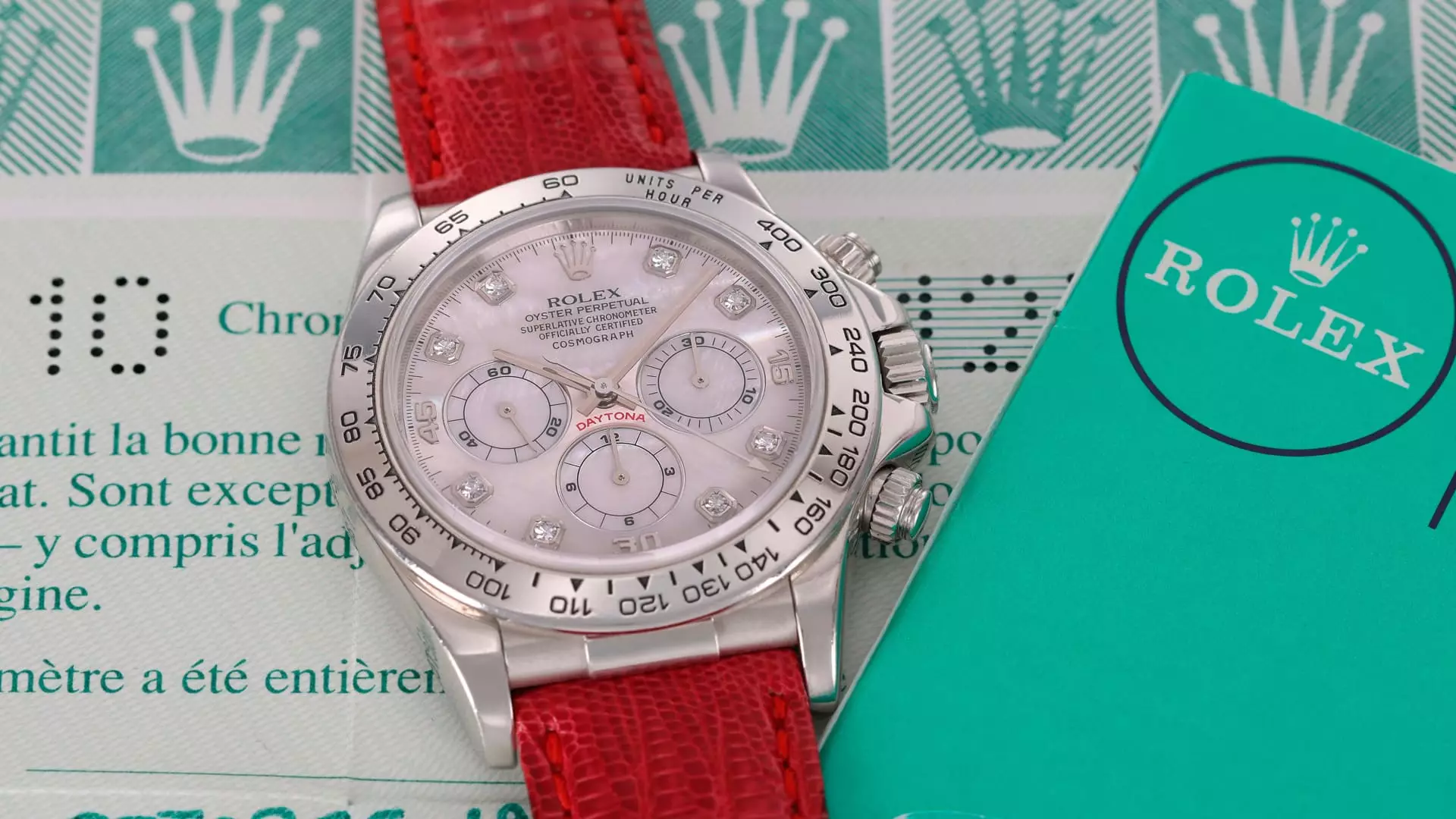In the world of horology, few items capture the attention of collectors and enthusiasts quite like a rare watch from an esteemed brand. A striking example is the 1999 Platinum Rolex Daytona that is set to hit the auction block at Sotheby’s Geneva. With a potential sale price reaching a staggering $1.7 million, this timepiece embodies both luxury and rarity. Why does this particular model incite such fervor among bidders? Its allure lies not just in its aesthetic beauty or brand prestige, but also in its rich backstory and the exclusivity that comes with owning an item crafted for a select few.
Rolex has long been synonymous with quality, precision, and aspirational luxury. However, this Daytona stands apart from the sea of stainless steel and gold models due to its unprecedented use of platinum, a material Rolex made its official entry into only in 2013 for commercial collections. The fact that this watch, produced in 1999, employed platinum casts a spell of intrigue around it, accentuated by its mother-of-pearl face adorned with 10 diamonds. This is not merely a watch; it is a statement piece that reflects an outdated notion of what luxury should look like.
A Status Symbol Crafted in Secrecy
The watch’s backstory provides a unique narrative that elevates its importance within the realm of luxury collectibles. Unlike other timepieces that roll off the assembly line in a faceless factory, this Daytona was privately commissioned. That level of customization—for a brand known for its strict adherence to standard collections—is a rarity in itself. Senior watch specialist Pedro Reiser from Sotheby’s emphasizes this peculiarity, noting that commissioning a piece from Rolex is nearly unheard of. This creates a cachet that goes beyond that offered by standard luxury watches, transforming it into an object of desire for the affluent and discerning.
Furthermore, whispers about the watch’s connection to Patrick Heiniger, the former Rolex CEO who led the brand through a transformative period, add layers to its appeal. Although concrete evidence tying Heiniger to this specific piece remains elusive, the mere association amplifies its desirability. It highlights the profound secrecy that often shrouds luxury brands, feeding into a narrative that seizes the imagination of potential buyers. This psychological component—where breeding myths around a product amplifies its value—has become a cornerstone of luxury marketing.
The Investment Potential: When Timepieces Become Assets
As we consider the changing landscape of luxury investments, it is crucial to recognize that watches such as this Daytona are increasingly viewed as financial assets. With wealthy collectors—particularly younger ones—turning their attention to horology, timepieces have emerged as a lucrative avenue for capital growth. According to Knight Frank’s recent index, luxury watches have skyrocketed in value, climbing over 125% in the past decade. Such statistics underscore a compelling truth: owning a rare watch is no longer merely about status; it’s about shrewd investment.
The market is also blossoming with diverse international buyers, opening doors to a broader audience that recognizes the timepiece as a viable asset class. The entry of under-30 collectors into this space signals a generational shift, as wealth is redefined and distributed. Investing in a customized piece like the Platinum Daytona not only offers a chance for appreciation but also creates a cache of exclusivity in an age where status symbols are evolving.
The Complexity of Modern Luxury
This Platinum Daytona, while undeniably luxurious, reveals the nuances of modern consumer culture. Collectors today are not merely purchasing an object; they are buying into a narrative, a lifestyle, and, increasingly, a financial opportunity. With the luxury market pivoting toward more personalized experiences, the demand for unique pieces such as this Daytona illustrates a thirst for items that carry substantial stories and investment potential. But are we, as consumers, feeding into the myth too easily? In chasing after objects steeped in history and whispered legends, are we sacrificing authenticity for intrigue?
Ultimately, the 1999 Platinum Rolex Daytona encapsulates a moment in time reflected in a glittering surface, yet it also unveils the complexities of desire, investment, and exclusivity in today’s luxury-driven world. As the auction approaches, the intense interest serves as a reminder of the delicate balance between the search for identity and the commodification of luxury.

